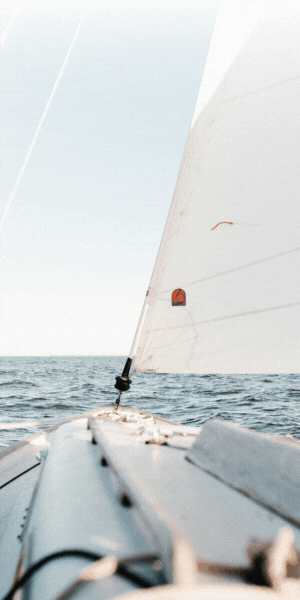The Naval Architect: January 2018
Russia is striving to expand commercial development of Arctic resources, and in this context it is becoming important to ensure a year-round shipment of hydrocarbons produced in the Arctic not only to the Western destinations, but also to the Pacific Rim countries like China, Korea and Japan. From experience we know that historically the progress of ice technologies has been driven not only by state-of-the-art research, but also by long-term goals and strategies of the nation.
In the past the primary goal of transportation in ice-infested waters was to provide life support services to small population centres in the northern regions, so-called the ‘northern supply haul’, which was done by relatively small-size ice class ships. The main task of these vessels was to deliver cargoes to Arctic harbours. Economic considerations were of secondary importance.
Commercialisation of the Arctic and a shift to year-round freight transportation from the Arctic (not only to traditional Europe and US destinations, but primarily to the Pacific Rim countries) has given an impetus to the development of new ice–going vessels. Data regarding the covered distances and time scales of cargo shipments from Murmansk to the main Pacific ports, demonstrated the attractiveness of these logistic solutions.
Arctic cargo shipments to the Far East have to be economically competitive with the itinerary around Eurasia. Competitive advantages can be achieved if average speeds of heavy-tonnage vessels in ice-infested waters are increased to 12-14knots. With this purpose in mind Russia is building a new series of 60MW icebreakers, including a super-powerful icebreaker of a new generation as well as developing large-size cargo vessels of high ice classes. One example of the latter is the LNG tanker Christophe de Margerie. Such vessels, however, are constructed based on experience and rules inherited from previous generations of ice-going ships, which had much smaller dimensions and operated in ice at relatively slow speeds (as a rule 5-6knots).
The need to attain higher speeds in ice calls for substantial changes in our approaches to design of icebreakers and heavy-tonnage ice class vessels. Until recently fast ship speeds in ice have not been considered as an issue of primary importance. Further studies are needed to gain a deeper insight into ice-going performance, strength aspects, ice/propeller interaction and icebreaker/ship coordination to enable operation at higher speeds. All these issues have to be resolved in the immediate future because transportation systems for speedy sailing in ice are already in the making. Solutions to many of the above problems can be found from ice basin experiments. Some results obtained in the Ice Basin of Krylov State Research Centre during research studies on fast-speed operation of large-size vessels in ice are discussed below.
A heavy-tonnage vessel can only operate at high speeds in ice features of more than 1.5m thickness with the assistance of a powerful icebreaker. Experiments conducted in the ice basin were intended to investigate the operation of an icebreaker making a navigable channel in ice as well as operation of a large-size vessel sailing behind in the ice channel. Two options of advanced nuclear icebreakers were considered in these studies: a 60 MW icebreaker of new Arktika type and a 120MW icebreaker. A heavy-tonnage vessel model of the Christophe de Margerie type was also chosen.
In the icebreaker model tests the main focus of attention was on the icebreaker speed modes under various ice conditions as well as possible speed variations in case of sudden changes in ice situation (ice ridges, rafted ice, etc.). Self-propelled model tests in continuous level ice have revealed that the icebreaker is able to make a channel in ice of 1.5-2m thickness at a speed of 10-12knots. Thus, there are icebreaker enablers of sufficient capacity to implement a future transport system for speedy navigation in ice-covered waters.
The experimental data showed what happens with the speed of the 120MW icebreaker running into ice features in a continuous level ice field: rafted ice of 3.5m thickness and about 400m length; and ice ridges of a 2.0m consolidated layer, keel depth 5.0 and 11.0 metres, and width 50 and 100 metres.
When the leading icebreaker passed a ridge of smaller depth, the speed loss was not more than 1 knot; therefore, the test data is not shown in this case. Analysis of the experimental data suggests that the 120MW icebreaker demonstrates good inertial performance to overcome significant ice features without stopping.
Speed modes of a large-size LNG tanker sailing in the channel made by the 120MW icebreaker were also investigated.
The obtained results indicate that the maximum speeds attainable by the LNG tanker under study in a fresh channel behind the 120MW icebreaker in 2.0m-thick ice is 7.2knots ahead, and 9.2knots ahead in 1.4m-thick ice. Behind the 60MW icebreaker the tanker speeds are even slower because the channel made by this icebreaker is narrower and the tanker has to widen it.
Unique experiments under simulated ice compressions show that under ice loads at ice compressions of 2.0 to 3.0 (severe) and ice thickness of 2.0m, an Arctic LNG tanker drifts off the course in the direction of ice compressions and reaches the fast ice edge. The ship speed in the ice channel drops because her entire hull length is in contact with the channel edges. In relatively thin ice, as well as at ice compressions less than 2.0 (mild), the ship may advance steadily under partial contact of her sides with the edges. However in this case the tanker sailing behind is subject to compression around the entire length of the hull, which may cause significant speed loss and jamming in ice. Therefore, nuclear icebreakers have to use special tactics to avoid undesirable effects of ice compressions on a large-size LNG tanker in an ice channel. Krylov State Research Centre develops and verifies such tactical methods in the Ice Basin.
Another important factor is interaction of propellers with thick ice at high ship speeds. Higher speeds of ship operation in ice are expected to cause the most serious problems for propeller and rudder systems. These problems may be different for independently sailing vessels and vessels following an icebreaker in an ice channel. Independent sailing in ice at 12 to 14 knots will require a 1.5-fold increase in the available horsepower even for the stern-first mode. The propeller diameter will have to be increased in this case, which is not always possible because of draught and design constraints, and/or the propeller speed will have to be increased. In any case ice loads on the propeller will grow. The most realistic solution (though quite a difficult one from the standpoint of general ship design) would be to increase the number of ship engines and propellers.
On the other hand, practically all calculation methods today assume that the worst case scenario is ice millin As shown in the studies of A.V. Andryushin, if the speed in ice is increased at the same propeller pitch, the blade angle of attack at ice milling (ice cutting angle) should inevitably decrease, and a blade of zero attack angle may fall flat and bend under ice action instead of cutting ice. Also, the ice-milling design condition should be complemented with calculations of shock effects on blades inflicted by ice pieces or collisions with ice edges in the channel behind the icebreaker. The latter effects are most important for twin- and multi-shaft vessels, and are applicable to all vessels of high ice classes. The probability of such interactions is even higher for vessels equipped with two or more propulsion pods. Reliability of thrusters should be appraised not only in terms of blade strength but also based on the overall robustness of podded thruster units that should be able to withstand ice impacts at fast speeds.
The main conclusion of the above experimental studies is that hull forms of heavy-tonnage vessels should be designed specifically for speedy operation in ice channels behind icebreakers. The heavy-tonnage vessels designed for independent sailing in ice cannot maintain the required speed level in ice channels to support fast operation of the entire marine transportation system.




